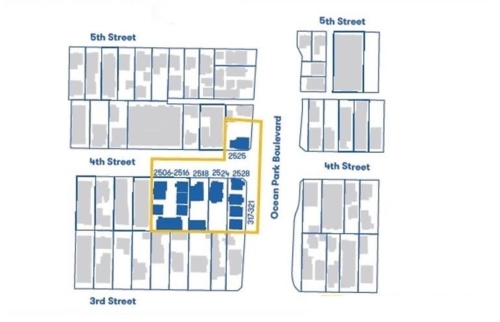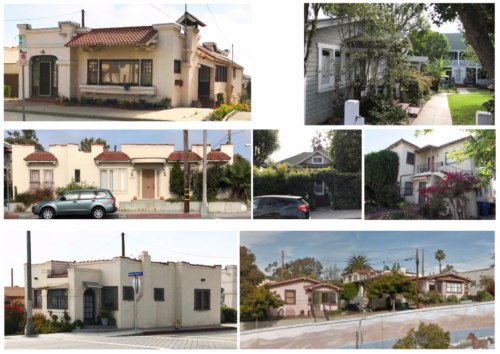News
Support a New Historic District in Ocean Park!

At the top of the incline where Fourth Street meets Ocean Park Boulevard is a collection of 14 intact historic residential buildings which convey what the neighborhood looked like in the early 20th century when they were built.
The Santa Monica Conservancy nominated these homes to become the Fourth Street Corner District. All the homes showcase historic architectural styles that are highly intact and uninterrupted with more modern structures, thereby making a cohesive historic district. Although smaller than the nearby Third Street Historic District, it’s larger and contains more historic homes than the recently designated 11th Street Historic District.
Inexplicably, the Landmarks Commission failed to support the application in a 3-3 tie vote. The Conservancy has filed an appeal and hopes to persuade City Council that this historic section of old Ocean Park deserves to be protected and preserved.
We need your help! The Conservancy’s appeal will be heard at the Council Meeting on July 23. Help us show Council members that neighbors and Santa Monica residents support the creation of the Fourth Street Corner Historic District. Write a message to City Council at [email protected] and copy us at [email protected] by July 23. Or click the button below to vote yes by emailing us.

Contributors to 4th Street Corner Historic District.
Background About the District
What unites these different examples of early residential architecture is their history– they were built following the western extension of Ocean Park Boulevard from Fourth Street to the beach in 1917. Before then, OP Boulevard ended at Fourth. After, with a major thoroughfare from the beach to Los Angeles, residential development followed. All but two of the residences in the district were built between 1917 and 1925. The group includes an unusual asymmetrical courtyard and all retain a high level of original design. In fact, 100% are contributors to the district.
The Conservancy became very concerned after learning that tenants in many of the structures had received Ellis Act eviction notices– indicating that these buildings were at risk of possible demolition or adverse alterations. Without historic district status, we could lose an important part of our history– and a unique corner of Ocean Park.
More About the Buildings
With the earliest building in the district dating from 1904 and the last from 1936, the variety of architectural styles portrays the evolution of residential homes in Ocean Park in that era. The 1904 house is a late Victorian hipped roof cottage with wood clapboard and shingle cladding, Corinthian columns supporting the porch, leaded glass windows and original windows and front door. A group of modest Craftsman “sister” bungalows parallels Ocean Park Boulevard, built around 1920. Other Craftsman homes are found in a bungalow court, a very unusual configuration as the buildings display various styles and construction dates. At the rear is a unique, one-of-a-kind fourplex with eclectic design features. A group of stucco clad bungalows at the corner are contemporary with the Craftsman homes, but represent a rare style in Santa Monica, deriving from Mission Revival precedents. Usually called Mediterranean, they have stepped parapet roofs, terra cotta tile on the roof and on shed roofs over openings, Craftsman-style windows, and detailed window design, including stained glass. This style evolved into Spanish Colonial Revival, a mature example of which is represented by the latest house in the district, a 1936 triplex that is already designated as a Structure of Merit. The City’s Historic Resources Inventory has listed all these buildings as landmark-eligible.
More About the Appeal
The consultant’s report and staff report did not support creating this district. The consultant objected to the size of the district, asserting that this group is a “cluster” and too small for a district. This objection is based upon their definition of “best practices,” and not by the definition of historic district in the Santa Monica Municipal Code and by the National Park Service. Santa Monica already has several small historic districts – the Bay Street Cluster consisting of four Craftsman-style multifamily buildings, and the 11th Street Historic District, with fewer homes and just 50% of the homes as contributing to the district.
The consultants and staff also asserted that the streetscape changes made in the late 1960s, during the Redevelopment period, diminished the integrity of the district. Although 4th Street and Ocean Park Boulevard were widened and an underpass created, these changes did not alter the integrity of the district at all, which retained its architectural and historical character intact.
The City Council hearing is “de novo,” meaning that they are not bound by the Landmarks Commission decision, but consider all the evidence and make their own determination.
This entry was posted in Advocacy and tagged 4th Street Historic District.
Bookmark the permalink.
